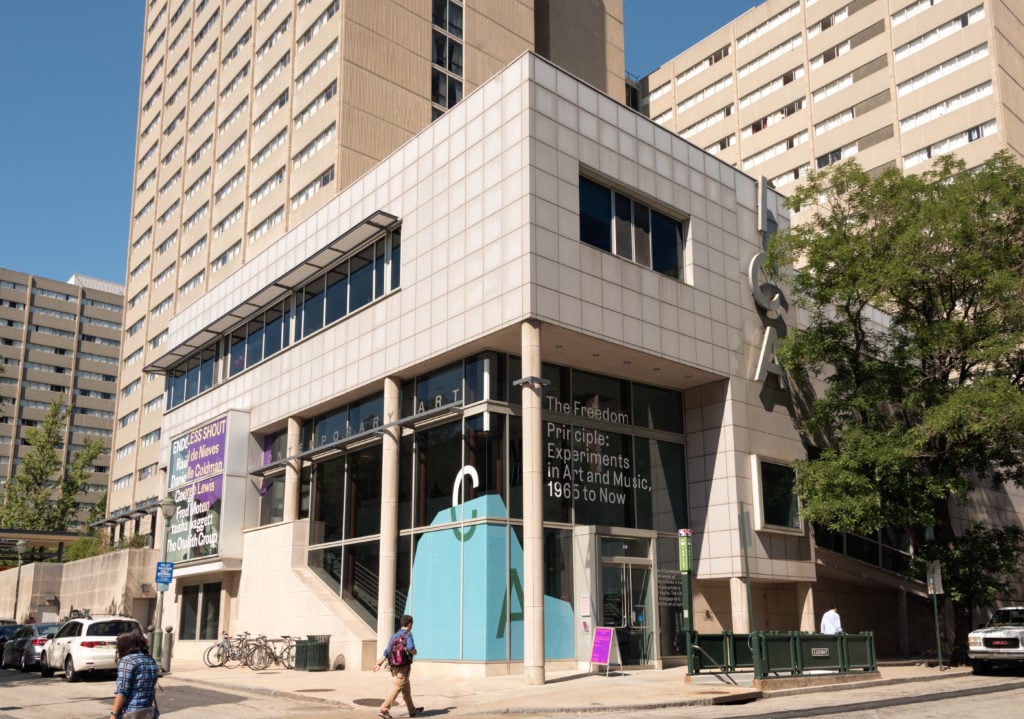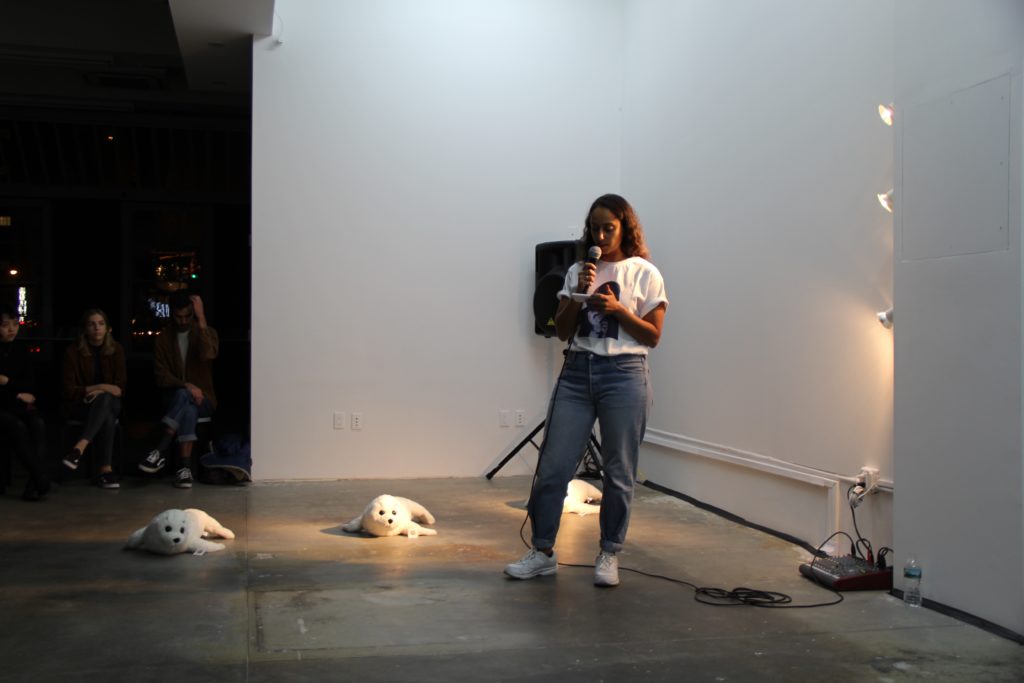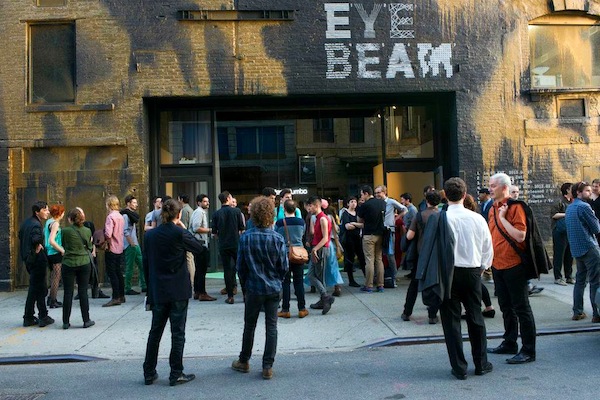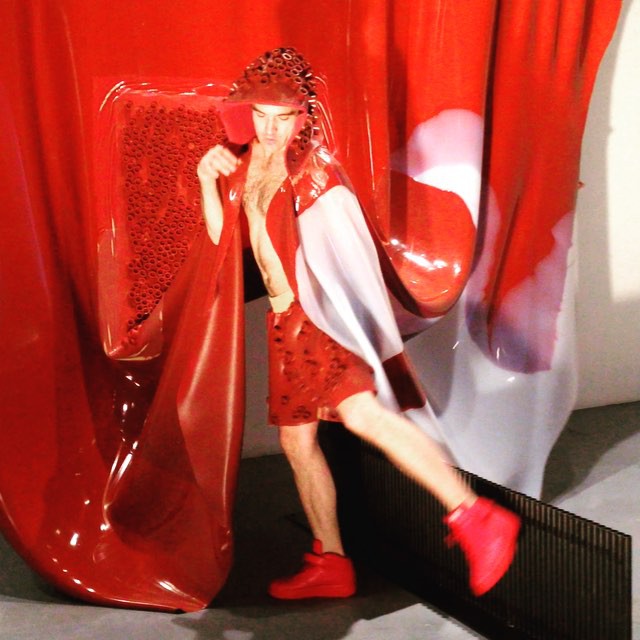Art World
What It Means for ICA Philadelphia to Become the First WAGE-Certified Museum—and Why Other Institutions Should Care
The news brings the practical and philosophical implications of WAGE's labor recommendations into focus.

The news brings the practical and philosophical implications of WAGE's labor recommendations into focus.

Tim Schneider

Thanks to the ongoing wildfire of news about deaccessioning and museum admission policies, the art world has spent the opening months of 2018 engaged in a lively debate about how and where arts institutions should spend their money.
So last week was an especially impactful time to learn that the Institute of Contemporary Art at the University of Pennsylvania (ICA) had become the first museum to receive certification from Working Artists and the Greater Economy (WAGE), the New York-based activist organization devoted to helping arts nonprofits and artists establish equitable, self-regulating labor relationships—including paying artists for shows and lectures—all in pursuit of a fairer, more economically balanced art industry.
Since WAGE’s mission echoes, if not epitomizes, so many of the most pressing issues at the forefront of the arts today, it’s worthwhile to unpack the details of its nascent partnership with ICA. What are the actual commitments involved, both practically and philosophically? Why was a significant non-collecting museum willing to make them, especially now? And could this be the next step in an enlightenment (finally) dawning across much, if not all, of the 21st century art economy?

Ramaya Tegegne performs Bzzz Bzzz Bzzz (New Jerseyy), at the Swiss Institute, which first earned WAGE Certification in fiscal year 2017. Courtesy of the Swiss Institute.
Founded in 2008, WAGE is best known for developing a sliding scale of fees to guide artists’ participation in every aspect of institutional programming. The scale covers 15 categories of artistic labor, ranging from participating in solo and group exhibitions to delivering artist talks or readings to performing in another artist’s piece, plus many more.
WAGE assigns specific fees to an interested institution based on their projected total annual operating expenses (TAOE) for the fiscal year in question. The fee structure is divided into three tiers: Nonprofits with TAOE under $500,000 pay what’s called the Floor WAGE; those with TAOE between $500,000 and $15 million pay the Minimum WAGE; and those with TAOE over $15 million pay the Maximum WAGE.
The fees scale up from tier to tier. All nonprofits qualifying for the Floor WAGE pay the same rates, regardless of their individual budgetary differences. Minimum WAGE-qualifying nonprofits pay rates calculated from fixed percentages of their TAOE, while Maximum WAGE-qualifying nonprofits would pay fees proportional to the average annual salary of their full-time employees.
Institutions earn WAGE Certification on a fiscal-year-by-fiscal-year basis. The process hinges on proof that the institution paid all necessary artistic laborers according to the appropriate fee structure during the fiscal year in question. Despite a principled exception made for SFMOMA’s Open Space publishing platform in 2016, partial certification is not normally an option. Essentially, if an institution only prioritizes equitable payment of select artistic laborers, then WAGE believes that institution has not yet internalized the true meaning of equitability.
With the recent addition of ICA, 54 arts nonprofits of various sizes and types have earned WAGE Certification to date. And the organization is working hard to try to make further expansion as welcoming a prospect as possible.

Richard Serra’s Sequence at the San Francisco Museum of Modern Art, whose Open Space initiative first earned WAGE Certification in fiscal year 2016. Courtesy of the San Francisco Museum of Modern Art, © Henrik Kam.
In its sensitivity to the drastically different budgetary outlooks of different institutions, WAGE’s fee structure speaks to its pursuit of economic fairness for all parties involved in the arts nonprofit ecosystem—not just artists. Lise Soskolne, WAGE’s core organizer since 2012, was quick to emphasize this aspect of the mission in a conversation with artnet News. “This process is not adversarial,” she said of WAGE Certification. “It’s really collaborative when we start working together. WAGE draws on [institutions’] knowledge as much as they draw on ours.”
A collaborative spirit motivated ICA’s unprecedented decision to prioritize WAGE Certification, too. Although Soskolne said serious conversations with the ICA kicked off in spring 2017 via its director of curatorial affairs, Robert Chaney, “the process began many years previous, from discussions internally in the museum, led largely by the curatorial team,” ICA director Amy Sadao told artnet News.
While Sadao lauded associate curator Kate Kraczon as “someone who brought back to the table again and again… the idea of ‘What is equitable exchange and payment to the artists that we work with?’” she said that similar sentiments were voiced up and down the organizational hierarchy, from Chaney and curator Alex Klein to the marketing department and administrative staff.
“We’re all very aware of the precarious financial situation that artists work in, choose, don’t choose, all of that,” Sadao said. “That’s what it means to be an artist, sadly, in a country”—by which she clarified that she meant “a government”—“that does not value cultural work and does not value artists.”
ICA’s institution-wide philosophical buy-in reflects WAGE’s experience with its other certified nonprofits. Soskolne said that she used to think that a large institution opting for certification would be the tipping point. Instead, the momentum has been driven by “more of a grassroots movement of small organizations” that “are really in touch with their missions and really understand the necessity of doing things this way.”
Sadao also credits WAGE for its willingness to appreciate and problem-solve for the internal challenges faced by museums like the ICA. “WAGE did their work to hear from colleagues in museums about how to respond to museums’ efforts toward equitable remuneration,” she said. From there, it took roughly a year of collaboration between the two sides before the ICA could look into its budgets and see “the places where we had to make hard decisions,” Sadao said.
So what exactly does the end result look like for ICA?

Visitors outside Eyebeam, which first earned WAGE Certification in the 2017-18 fiscal year. Courtesy of Eyebeam.
With a projected TAOE of $4.8 million in fiscal year 2018, ICA falls into the Minimum WAGE tier of the fee scale. Since ICA’s full programming calendar for that period is still in progress, neither the museum nor WAGE would provide artnet News specific estimates for the overall cost of certification or the individual fee recommendations. But for comparison, WAGE has calculated hypothetical rates for the Public Art Fund, which is not currently certified. At an estimated TAOE of nearly $4.6 million—nearly the same as that of the ICA—sample fees would be $9,117 for a solo exhibition, $1,368 for an artist talk or reading, and a $125 day rate for performers.
As a rough point of reference on the macro financials, WAGE wrote an illuminating open letter to the New Museum in 2016, shortly after the institution announced that it had raised $43 million toward expanding into the neighboring building on the Bowery. The letter estimated that the total cost of certifying the New Museum’s 2014 fiscal year, when its TAOE totaled just under $14 million, would have been about $301,000, or 2.2% of that year’s TAOE. The group wrote to the museum that, by its standards, the $301,000 could have equitably paid 184 artists, “16 of whom supplied your exhibitions and 168 of whom provided the content of your public programs.”
This example shows how some museums may have to scale back programming if they want to achieve fair payment practices. “We will have to make choices about maybe doing less so that everyone gets paid equitably,” said Sadao.
It’s a trade-off that ICA was ultimately willing to make in no small part because Sadao and most of her colleagues at the museum have roots as practicing artists. “Problem-solving, creativity, self-reliance, an embrace of the unknown, and a willingness to take big risks—that’s all in our DNA,” Sadao said. “So when you get that same thing happening in an organization with a common mission, money is not the restriction. It’s just the rules of the game.”
When asked where ICA would source the funding for the fees, Sadao said that “the widest number of gifts given to ICA are at the director’s discretion. They’re basically unrestricted giving,” which grants her office “a lot of freedom with what to prioritize.” At the same time, she underscored that she and her staff were only able to implement WAGE Certification through the trust and funding of their “visionary patrons and partnerships” with the university’s upper echelon.
So what actually happens after an institution receives certification?

Silas Riener performing with sculptures from Martha Friedman’s Pore at Locust Projects, which earned WAGE Certification in the 2017-18 fiscal year.
Courtesy of Sarah Cascone.
No formal contract governs WAGE certification. While some might see this as a curious omission, Soskolne says that the lack of binding, external oversight is exactly the point. WAGE Certification “is based on self-regulation.” The idea is to spur arts nonprofits to seriously engage with the idea of what equitable exchange means, then internalize the answer into their respective missions so they can carry it forward.
To aid this process, WAGE provides an online auditing infrastructure. After registering on the organization’s website with details about its TAOE, administrators are asked to enter the details for every relevant event in the institution’s programming calendar, such as the program title and payment date, the names of artists, the fee category, and the amount paid to participants.
The interface saves each record to the museum’s profile as a way to track their overall progress. Records that meet or exceed WAGE’s payment standards appear in black text with a WAGE checkbox. Records that fall short appear in orange text with an exclamation point. This mechanism gives both sides a simple running tally of the institution’s performance relative to expectations, as well as a complete accounting at the close of the fiscal year. In this sense, it expresses Soskolne’s description of WAGE’s larger fee structure as an “interlinked system of transactions where we hold each other accountable.”
While the ICA is the first museum to receive certification, it’s far from the only one that has seriously engaged with WAGE. Soskolne says that the group “came close” to certifying other museums in the past, and that she receives inquiries from institutions frequently. Many of these ultimately fade away, but others progress in more encouraging ways. For instance, with coordination from Claudia LaRocco of SFMOMA’s Open Space, WAGE held a closed-door session in late 2016 with representatives from various significant institutions. “There are people within large museums who are pushing for this,” Soskolne says.
Sadao, too, knows the ICA is far from alone in its pursuit of radical equitability. As an employee in any arts nonprofit, “You have to always think: Who has the least amount of resources? And what is our role as the nonprofit, as staff who get a salary to advance the mission of this organization? How do we justify our salaries?” she asks. “I would bet that 99.9% of my colleagues ask themselves that question when they wake up in the morning and before they go to sleep at night, if they sleep at all.”
This is why Sadao disavows the notion that other museums cannot find a way to join ICA as WAGE Certified. “It’s not like we’re so special that we did this. This institution is really special, and I can’t take credit for that. But I think that it’s an easily achievable initiative for all of my colleagues, and I believe that all of my colleagues are working toward this. And I hope that WAGE’s phone starts ringing off the hook when I tell them, ‘[WAGE is] super nice! It’s super easy to understand! Start slow.”
How much ICA’s enthusiasm will shift the conversation remains to be seen. With its first museum on board, “It’s of course my greatest hope that it will be a domino effect,” Soskolne says. “But it’s really hard to say.” With other initiatives in progress, though, she and her fellow activists believe they can make headway in their larger mission, regardless of how soon other museums follow in ICA’s footsteps toward certification. The challenge of achieving true equitability in the arts plays out in more than one arena, and WAGE is eager to form alliances of all kinds to meet it.